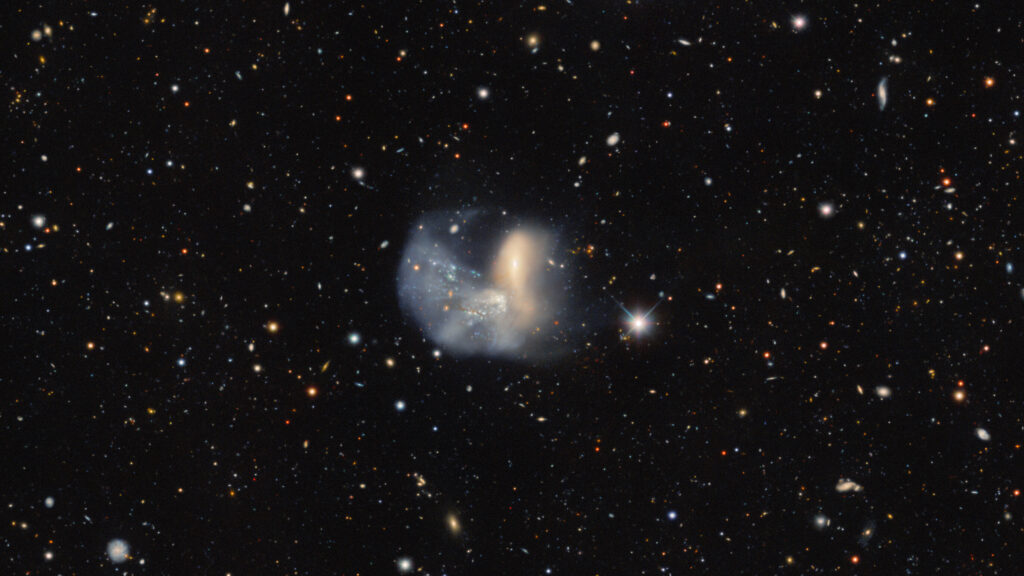Astronomers working on the Victor Blanco 4-meter telescope installed at the Cerro Tololo Inter-American Observatory have published a new image of the sky. It shows a pair of colliding galaxies, known under the designation NGC 454.

NGC 454 is located at a distance of 170 million light-years from Earth in the direction of the constellation Phoenix. It consists of the elliptical galaxy NGC 454 E inhabited by old stars, which has a diameter of 50 thousand light-years, and the larger irregular galaxy NGC 454 W. The size of the latter is estimated at 85 thousand light-years.
Despite the fact that both galaxies are in the early stages of tidal interaction, they are already showing strong distortions. It is believed that in the past NGC 454 W was a disk galaxy resembling our Milky Way. But now there are practically no traces left of its original spiral structure. We can only see a large number of star clusters consisting of young blue luminaries.
Some of the stars and gas were knocked out far beyond their original galaxies. The image also shows dust bands crossing NGC 454 E from the dynamic interaction. In a few hundred million years, both galaxies will merge into a single object, in which not a single trace of their original structures will remain.
The NGC 454 image was taken using a Dark Energy Camera (DECam). It is one of the most advanced astronomical instruments of our time. The camera collects the light reflected by the 4-meter mirror of the Victor Blanco Telescope and passes it through its insides, including a meter-long corrective lens. It is then captured by a grid of 62 devices with extremely sensitive CCD arrays. They allow DECam to create detailed images of faint astronomical objects.
According to https://noirlab.edu
Follow us on Twitter to get the most interesting space news in time
https://twitter.com/ust_magazine
